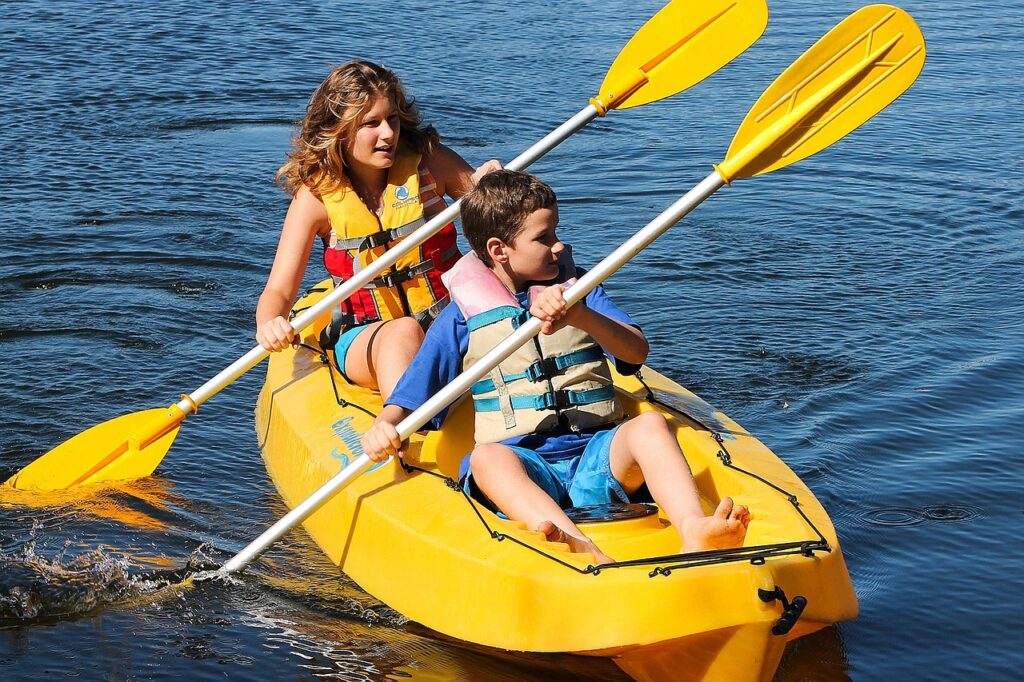Kayaking is a fantastic way to enjoy the great outdoors and explore nature. Whether looking for a peaceful paddle on a calm sea or an adrenaline-fueled adventure on rapids, kayaking can provide it all. If you’re a beginner looking to learn how to kayak on a sit-on-top kayak, then you’re in luck! This article, filled with kayaking tips for beginners, will cover the basics of sit-on-top kayaking, including carrying the kayak, getting in and out, paddle handling, technique, steering, balance tips, draw strokes, safety, and more.
Sit on Top Kayaks and Why They are Good for Warm Weather Paddling
Sit-on-top kayaks are popular for beginners because they are stable, easy to use, and great for warm-weather paddling. These kayaks have an open deck, meaning you sit atop the kayak rather than inside it. This makes them more comfortable and less confining, especially in hot weather. The open deck design also makes getting in and out of the kayak easier.
Kayaking Tips for Beginners
Carrying the Kayak
Before you hit the water, you must carry your kayak to the launch site. To do this:
- Place the kayak on the ground and stand at one end.
- Reach down and grab the kayak’s handle, lift it, and rest it on your shoulder.
- Keep your other hand on the opposite end of the kayak to help balance it.
Getting in and Out
Getting in and out of a sit-on-top kayak is easy. Approach the kayak from the side and place one foot on the kayak’s centerline. Then, lower yourself onto the kayak, bringing your other leg into the kayak. To get out of the kayak, reverse the process, stepping out one foot at a time.
Paddle Handling
The paddle is your primary tool for propelling and steering the kayak. Hold the paddle with both hands, with your hands shoulder-width apart. Keep your elbows slightly bent and your grip firm but not too tight.
Technique
To move the kayak forward, sweep with the paddle, starting at your toes and pulling the paddle back towards your hip. To turn the kayak, paddle on one side only. For example, float on the right side of the kayak to turn left. To turn right, paddle on the left side.
Steering
Steering the kayak involves using different paddle strokes to change direction. To turn the kayak sharply, use a draw stroke, which consists in pulling the paddle towards the hull. To turn the kayak gradually, use a sweep stroke, which involves sweeping the paddle in a wide arc.
Balance Tips
Maintaining balance on a sit-on-top kayak is essential for stability and control. Keep your center of gravity low and distribute your weight evenly on the kayak. Keep your upper body relaxed and avoid leaning too far in any direction. Draw Strokes Draw strokes are an essential technique for steering the kayak. To perform a draw stroke, reach out with your paddle and place it in the water near the kayak’s stern. Pull the paddle towards you, keeping it close to the kayak’s hull. This will turn the kayak in the opposite direction of the paddle.
Safety
Before heading out on the water, taking some safety precautions is essential. Always wear a personal flotation device (PFD) and make sure it fits properly. Check the weather forecast before heading out. Be aware of potential hazards, such as strong currents or underwater obstacles. Bring a cell phone or other means of communication in case of emergency.
In conclusion, kayaking on a sit-on-top kayak is a thrilling and rewarding experience for beginners. Following the kayaking tips for beginners, you can safely and confidently navigate the waterways. Remember always to prioritize safety and take necessary precautions before heading out. With practice and patience, you’ll soon be enjoying the beauty of nature from a new perspective. Happy kayaking!
Learn more: LEARN TO SUP IN 5 MINUTES – STEP BY STEP GUIDE




